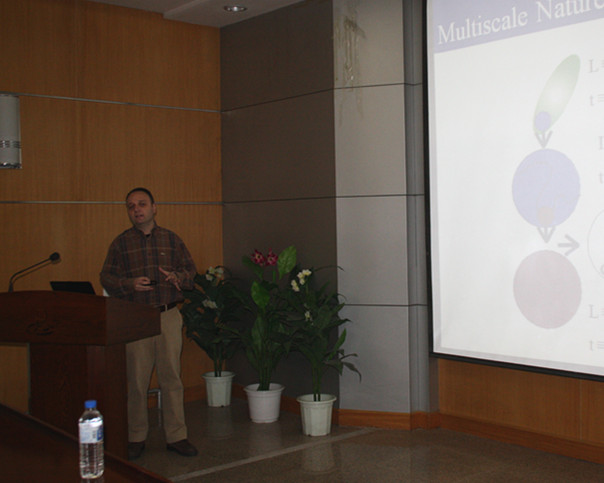On October 28, 2011, Dr. Giuseppe Milano from Modeling Lab for Nanostructure and Catalysis, Dipartimento di Chimica Università di Salerno I-84084 Fisciano (Salerno), Italy was invited to give a talk entitled “The Multiscale Molecular Simulations of Nanomaterials” at the CIAC.
The understanding of material performances, in particular the connection between chemical structure and properties, needs a description at atomic level of both structure and dynamics. Atomistic models provide very accurate descriptions and using suitable force fields are potentially able to give consistent information and good reproduction of several macroscopic properties. A computational approach to nanomaterials should involve the study of large size systems (inclusion of interfaces effects) on large timescales. This prevents the use of detailed atomistic models for this kind of systems. Specific coarse-grained models able to keep some molecular specificity can be used in order to save computational time. Several examples of this strategy were given in Dr. Giuseppe Milano’s lecture. Two different approaches were compared, coarse-grained models based on effective beads (superatoms) parametrized using reference atomistic simulations (Iterative Boltzmann Inversion) and particle-field models based on a hybrid particle continuum description. Several applications of these approaches to nanoparticles and carbon nanotubes polymer composites as well as to micellar systems for drug delivery were discussed as well.

|
